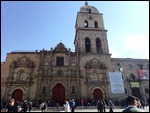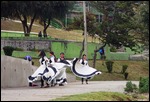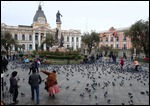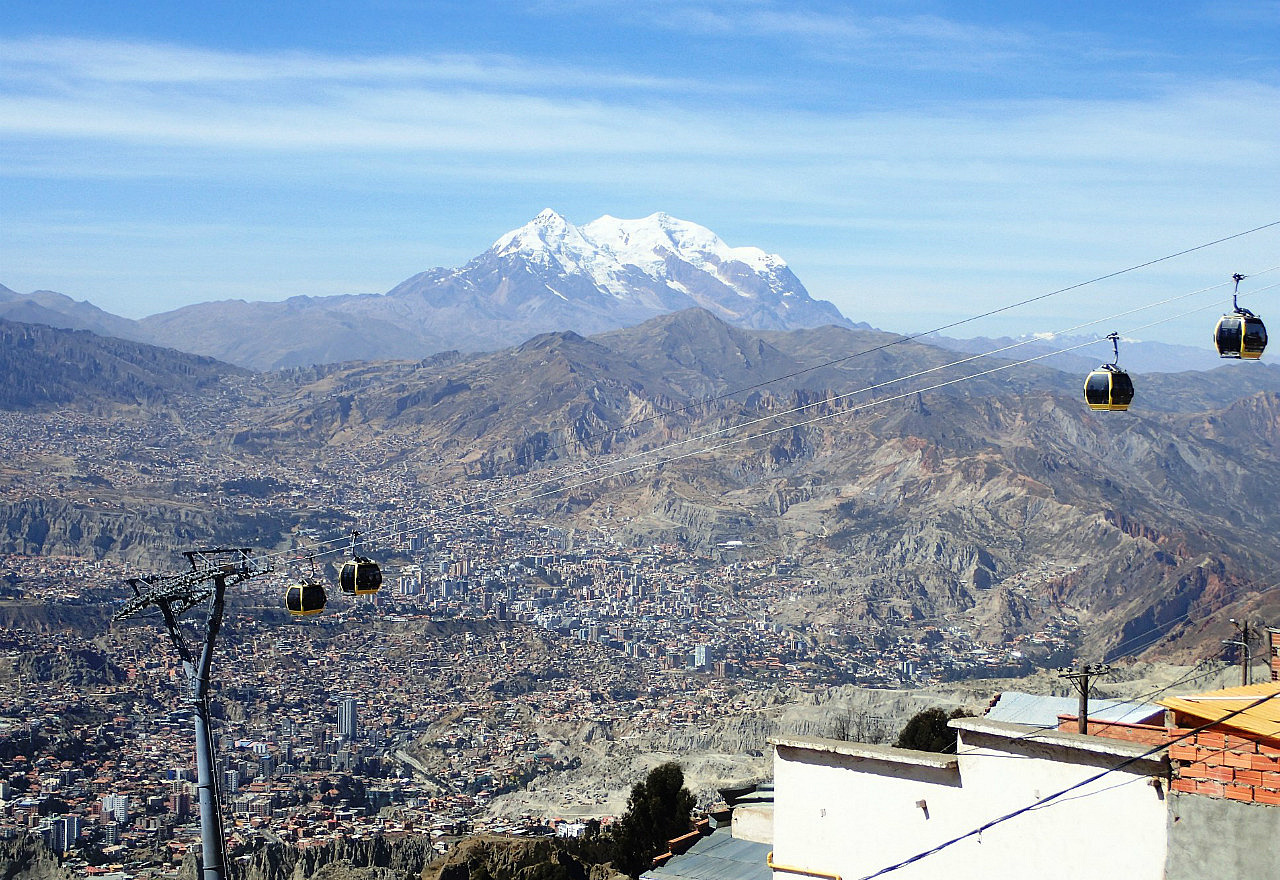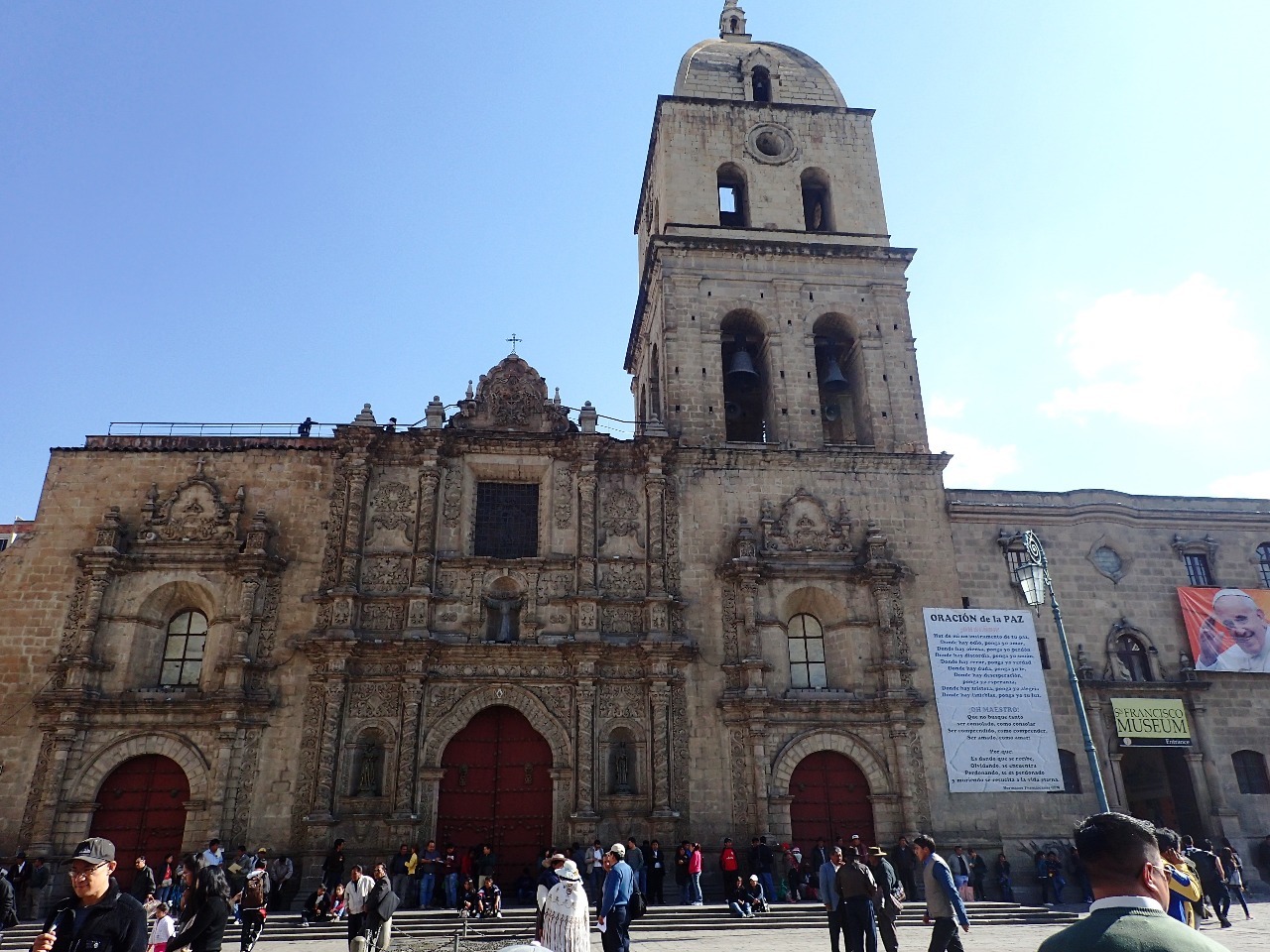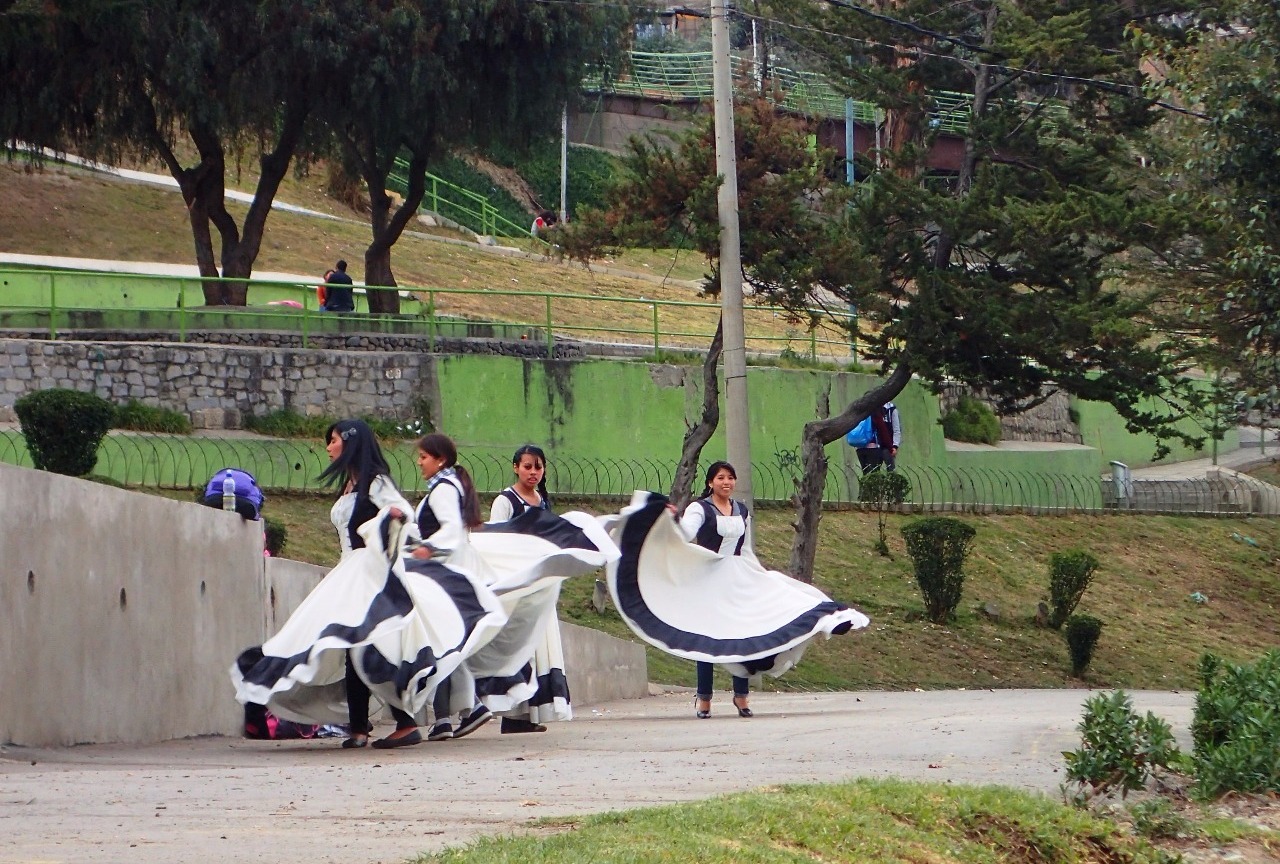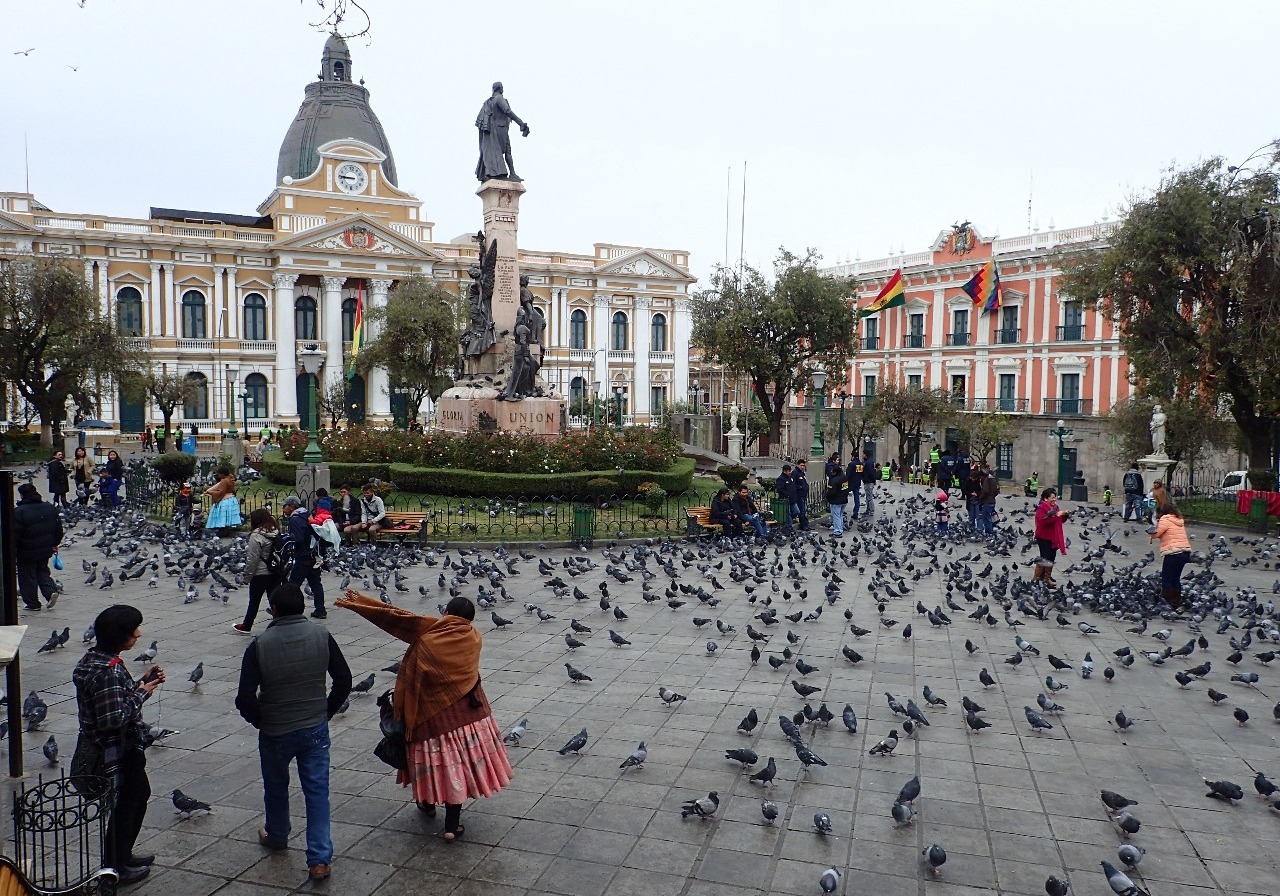Mike and I came to Bolivia to climb Mount Illimani, a 6439-meter high snow peak in the Andes Mountains and the highest peak of the Cordillera Real sub-range. This is several hundred meters higher than the highest mountain I've climbed to date -- Mount Kilimanjaro in Africa (5895 meters).
We flew into La Paz from San Francisco, California via Colombia's Avianca Airlines. On day of arrival we went to Climbing South America's business office in the center of town to solidify plans to climb Pequeno Alpamayo peak (5300 meters) as a training climb before attempting Mount Illimani.
At elevation between 3600 to 4000 meters, La Paz is the world's highest capital city. This other-worldly yet bustling metropolis is different in every respect from what one expects. Presided over by majestic Mount Illimani's eternal snows, ringed by the Altiplano's bleak, flat expanse and distant snow-capped Andean peaks, this city surprisingly features brand new cable car lines like what one would find in European Alps, and rainbow-colored Aymara Indian flags flying alongside the national flag on top of civic buildings. The recent re-make of the country by its first full-blooded Indian president - the controversial leftist Evo Morales -- into an Indian-centric "multi-national state" is yet another first in the whole of the Americas.
The most remarkable experience for me in this glorious yet harsh land is its strong resemblance of Tibet. The highland Indians not only are racially similar to residents of Central Asian highlands, their lifestyle and even feminine fashion have a strong resemblance. Aymara women wear many layers of colorful blouses, skirts and capes that also serve as carrying sacs, they wear bowler hats as fashion statement and for sun protection, these remind me of Tibetan women. Reserved, proud, and extremely resourceful, the Aymara people are highly active in the economy and is the great majority in the surrounding highland suburbs, The Aymara are also predominant in the city of La Paz, except for the wealthiest south zone of the city inhabited by more Spaniards and expats. Around La Paz I noticed many attractive native women in uniform working in traditionally masculine occupations, such as police patrol troops or gas station attendants.
Mike and I came to La Paz airport in early morning at 3 am, processed through customs, then waited at the chilly high-altitude airport till dawn before taking a cab to downtown. We ran into Climbing South America's founder Jeff Sandiford at his office, Jeff is a well-known Australian expat climber who recently guided a team Swiss scientists to the summit of Mount Illimani. Jeff helped us with rental gear, and informed us that our climbing guide would be Rachel, from the USA. Once settled into El Rey Palace Hotel about ten blocks away, we came back to the office to meet Rachel and make last minute arrangements. The plan was to go to Pequeno Alpamayo for training climb the next morning.
It was early winter in Bolivia, nighttime temperatures were below freezing but daytime temperatures were in the 50's Fahrenheit. We needed to get used to the dry highland air and cold temperatures quickly as well as the lack of oxygen. Walking up and down steep streets in La Paz were quite a challenge for me. Jeff advised us to drink 6 liters of water a day to speed up acclimatization, but it was not easy to drink this much water. In the hotel heating was barely available, so we wore layers of warm clothing even in the hotel room.
In-between our expeditions to the mountains, we had a few days in the city for sight-seeing. We visited the San Francisco church and museum, where there was a temporary exhibition of a dozen 17th century paintings of the catholic Virgin Mary adapted to native cultures of different Latin American countries - Mexico, Chile, Peru, Bolivia. Several of these religious images contained beheaded angels at the feet of the virgins, reminding me of the skulls often seen in Tibetan Buddhist religious icons. In one of the paintings the virgin's breast was Cerro Rico (the "rich hill"), the famed mountain of rich silver mines in Potosi, Bolivia. Mines in this mountain produced one-third of all wealth of the Spanish colonial empire, and still employ 15,000 miners today.
The other exciting attraction is the brand new teleferico system featuring several cable car lines that opened in 2014. La Paz is the first city in the world to use cable car lines as the backbone of a mass transit system, which works perfectly in this extremely hilly terrain. Clean, modern, affording wonderful views over the city, this is a great system for sight-seeing, although at 50 cents US per ride it's a bit pricey for local commuters. I also noticed in the teleferico stations local place names are spelled according to pronunciation of the native Aymara language, not the usual Spanish spelling.
We walked around an amusement park in the middle of the city where many local teens relax and have fun. Some girls were practicing Spanish style dancing, others were learning K-pop dancing from a Korean teacher. Snow-capped Mount Illimani was always a backdrop behind the hubbub of the city. Although there aren't many ornate colonial buildings, the main promenade of La Paz and the many neighborhood squares show formal Spanish colonial influence. At dusk, a bustling street dining scene warm up chilly evenings along these public squares and promenades -- colorfully dressed native women serving mainly beef and potato skewers in rows of food stalls. Very large portions predominate at informal restaurants serving local people, surely due to the need for high calories to go about life in this cold, oxygen-poor environment.

